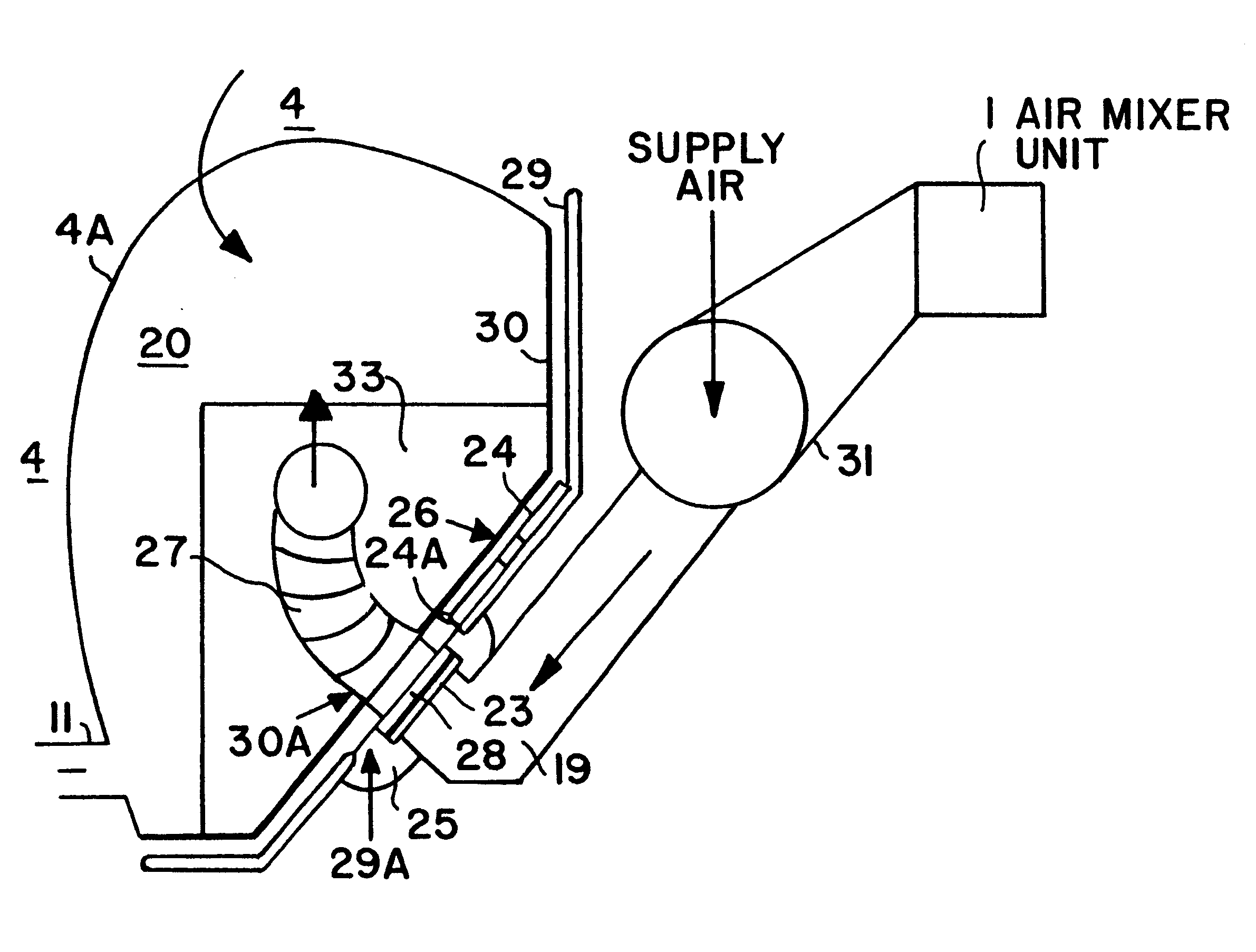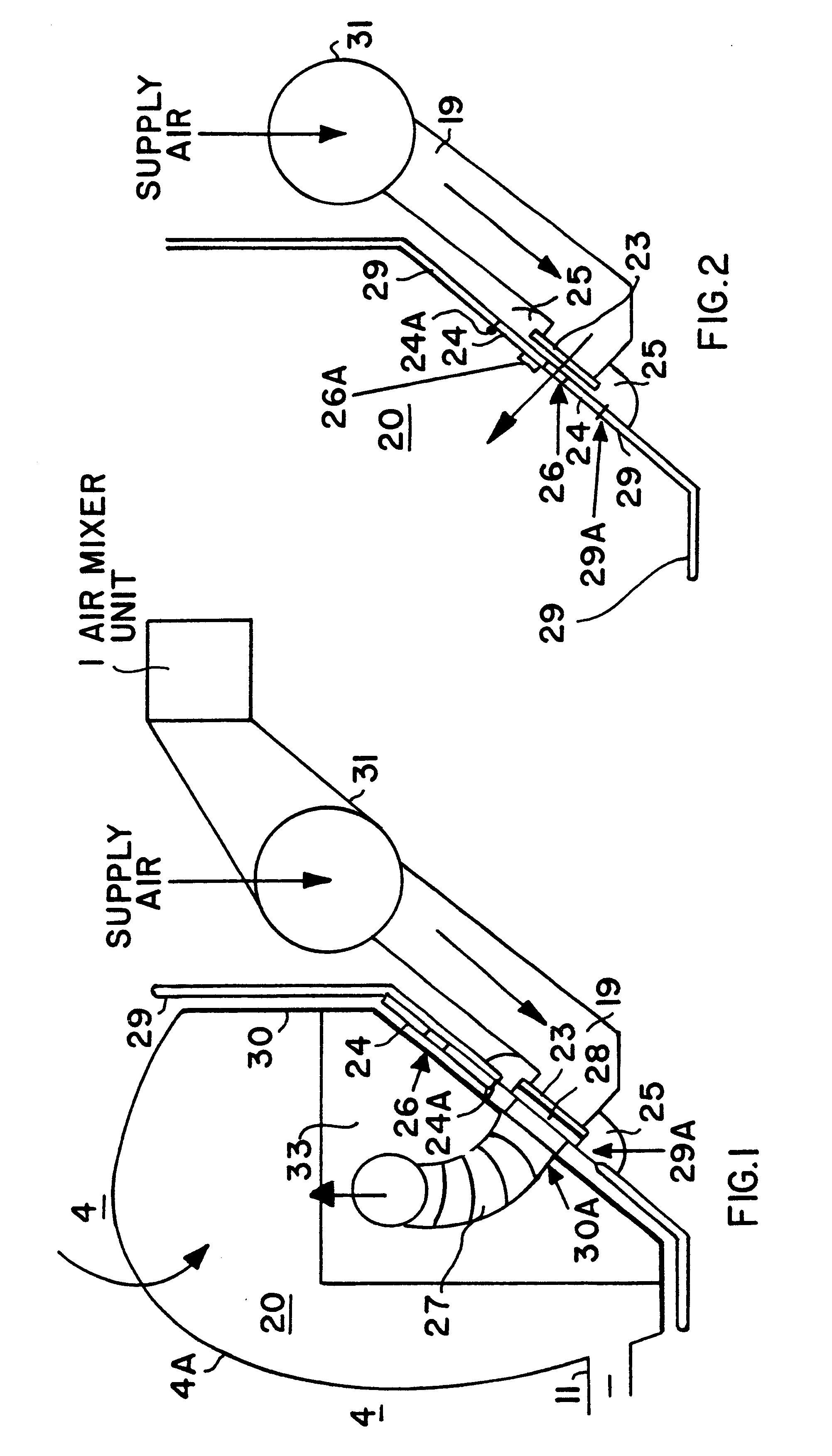Reconfigurable air supply arrangement of an air-conditioning system for below-deck areas of a passenger aircraft
- Summary
- Abstract
- Description
- Claims
- Application Information
AI Technical Summary
Benefits of technology
Problems solved by technology
Method used
Image
Examples
Embodiment Construction
FIG. 1 schematically represents the structure of the present air supply arrangement for an air-conditioning system, for a below-deck space of a passenger aircraft, and particularly such a below-deck space 4 which is generally a freight or cargo hold 4, but has a sleeping cabin container 4A installed thereon. The term "below-deck space" herein generally covers both such a space used as a cargo or freight hold and such a space used as a passenger compartment (for example within an installed sleeping cabin container). As is generally known, such a sleeping cabin container 4A has the outer dimensions and configuration of a standard freight container to fit into the standard freight hold of the aircraft, but is internally outfitted with a bed and the like for use by passengers or crew members, especially during a long overnight flight. The sleeping cabin container 4A includes a trim panel wall 30 that encloses the sleeping cabin container space 20 therein, as well as a trim component 33 ...
PUM
 Login to View More
Login to View More Abstract
Description
Claims
Application Information
 Login to View More
Login to View More - Generate Ideas
- Intellectual Property
- Life Sciences
- Materials
- Tech Scout
- Unparalleled Data Quality
- Higher Quality Content
- 60% Fewer Hallucinations
Browse by: Latest US Patents, China's latest patents, Technical Efficacy Thesaurus, Application Domain, Technology Topic, Popular Technical Reports.
© 2025 PatSnap. All rights reserved.Legal|Privacy policy|Modern Slavery Act Transparency Statement|Sitemap|About US| Contact US: help@patsnap.com


